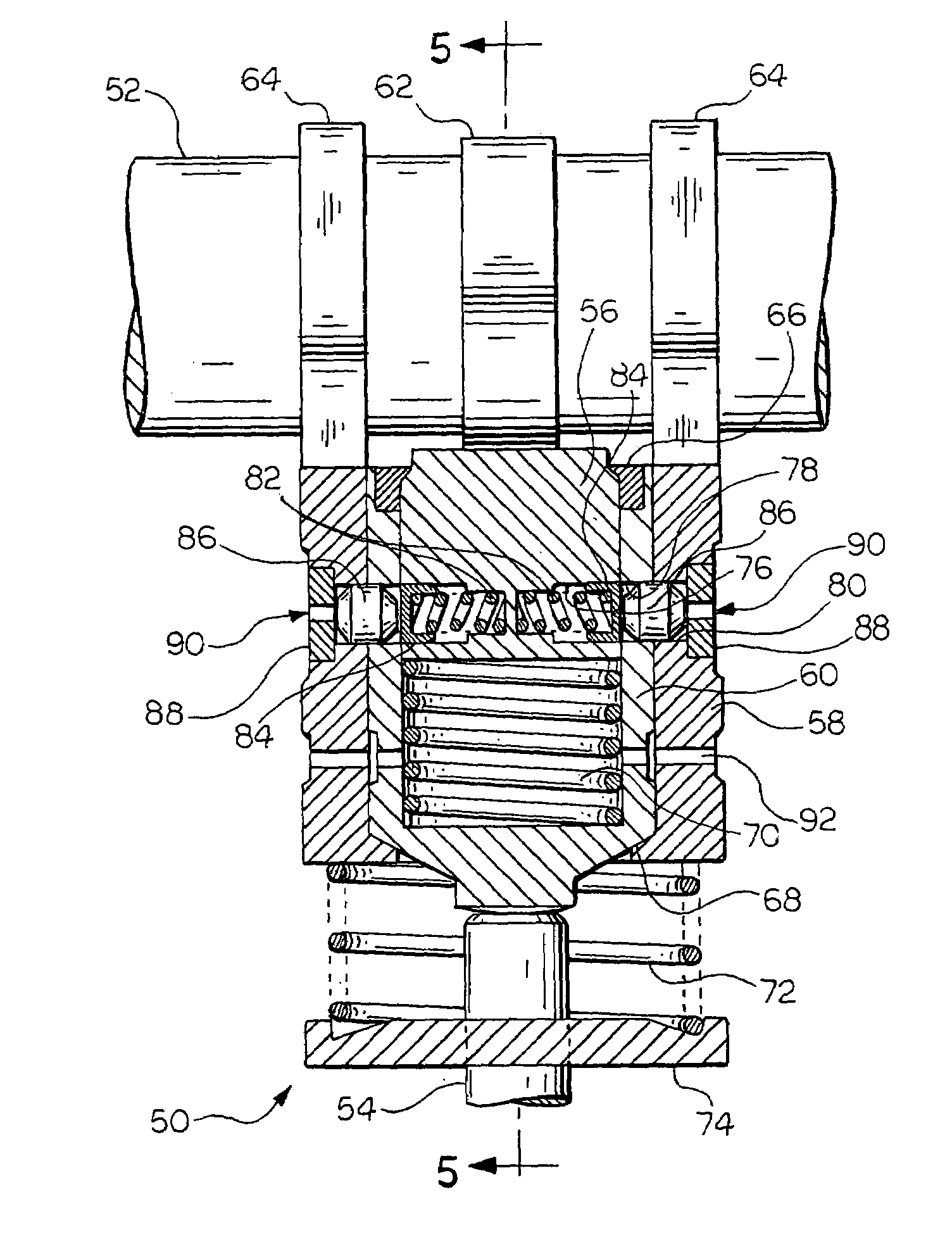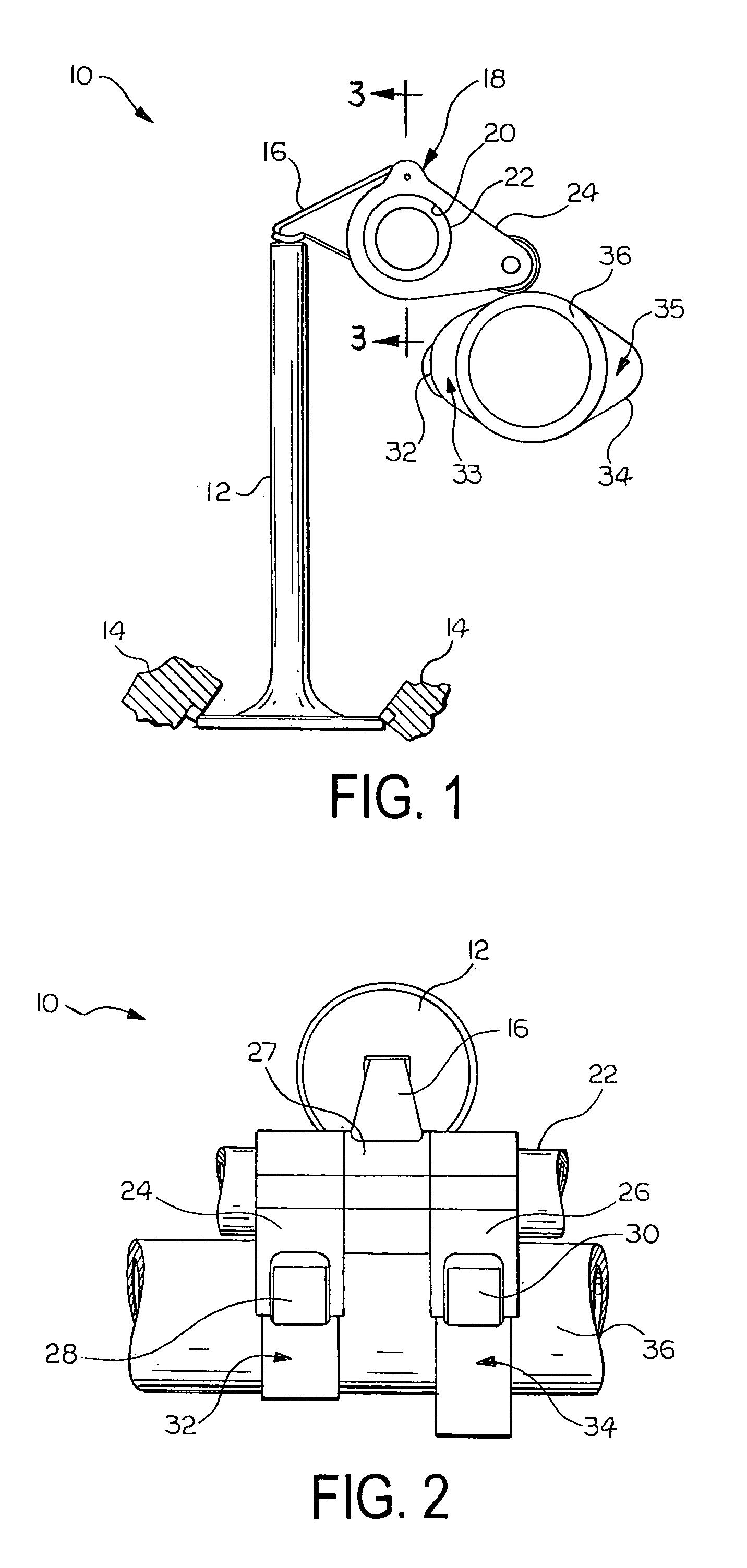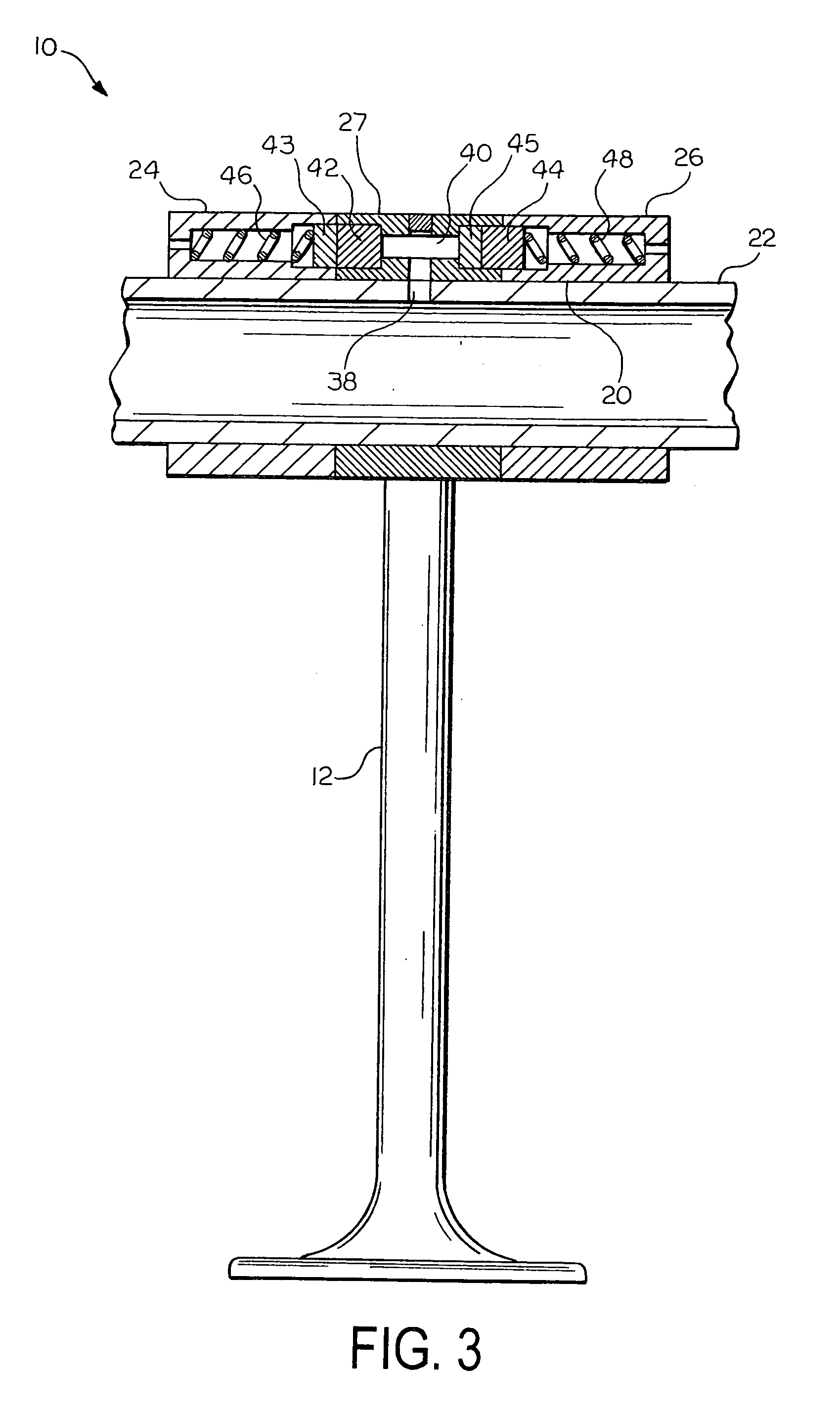Two-stroke and four-stroke switching mechanism
a switching mechanism and four-stroke technology, applied in mechanical equipment, valve drives, machines/engines, etc., can solve the problems of excessive consumption of fuel, increased power consumption, and increased power consumption of marine engines, so as to maximize power, fuel efficiency, and emissions efficiency
- Summary
- Abstract
- Description
- Claims
- Application Information
AI Technical Summary
Benefits of technology
Problems solved by technology
Method used
Image
Examples
second embodiment
[0033]Referring now to FIGS. 4 and 5, there is shown generally at 50 a schematic front elevational view of a mechanism for switching an engine from one stroke type to another stroke type or switching tappet assembly which represents the present invention. The tappet assembly 50 is disposed between a cam shaft 52 and a valve stem 54. The tappet assembly 50 includes an inner tappet 56 and an outer tappet 58. A valve plunger 60 is disposed between the inner tappet 56 and the outer tappet 58, and is substantially concentric therewith. The inner tappet 56 abuts a four-stroke cam surface 62 of the cam shaft 52 and the outer tappet 58 abuts a pair of two-stroke cam surfaces 64. It is understood that the inner tappet 56 could abut a two-stroke cam surface and the outer tappet 58 could abut four-stroke cam surfaces without departing from the scope and spirit of the invention. An inner tappet stop ring 66 militates against separation of the inner tappet 56 from the valve plunger 60. An outer ...
third embodiment
[0041]the invention is illustrated in FIGS. 12 and 13. In FIG. 12, there is shown generally at 110 a schematic side sectional view of a mechanism for switching an engine from one stroke type to another stroke type or a cam follower and rocker arm assembly. A valve stem 112 abuts an end of a rocker arm assembly 114. A piston 116 is disposed in a hydraulic lash adjustment cavity 118 formed within the rocker arm assembly 114. The piston 116 is urged into engagement with the valve stem 112 by a spring 120. Fluid communication between the hydraulic lash adjustment cavity 118 and a shuttle pin cavity 122 is provided by a first conduit 124. An exhaust orifice 126 provides fluid communication between the shuttle pin cavity 122 and the atmosphere. A second conduit 128 provides fluid communication between the hydraulic lash adjustment cavity 118 and a first axially extending oil supply conduit 130, which is in communication with a first oil supply (not shown). As illustrated, the first oil su...
PUM
 Login to View More
Login to View More Abstract
Description
Claims
Application Information
 Login to View More
Login to View More - R&D
- Intellectual Property
- Life Sciences
- Materials
- Tech Scout
- Unparalleled Data Quality
- Higher Quality Content
- 60% Fewer Hallucinations
Browse by: Latest US Patents, China's latest patents, Technical Efficacy Thesaurus, Application Domain, Technology Topic, Popular Technical Reports.
© 2025 PatSnap. All rights reserved.Legal|Privacy policy|Modern Slavery Act Transparency Statement|Sitemap|About US| Contact US: help@patsnap.com



